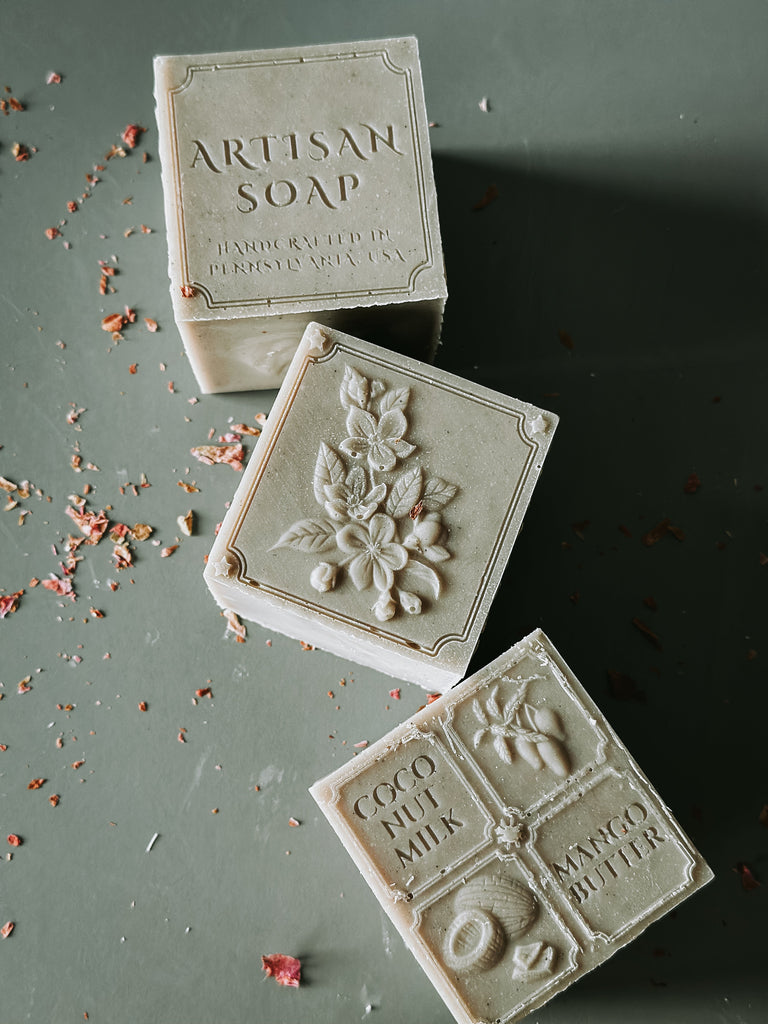Soapmaking is one of those beautiful crafts that seems both mysterious and magical—but at its core, it’s also deeply rooted in science. When you combine oils, lye, and water, you don’t just end up with a bar of soap; you’re creating something that undergoes fascinating chemical changes, transforming raw ingredients into a luxurious, skin-loving product.
As someone who has been making soap for years, I’ve learned that understanding the science behind the process makes it even more enjoyable—and, let’s face it, a lot less intimidating. So, let’s break down the essentials of soapmaking: the role of lye, the types of oils you can use, and why curing is so important.
The Role of Lye in Soapmaking
If you’ve ever read about soapmaking, you’ve probably heard the word “lye” tossed around. It’s the one ingredient that often raises eyebrows. I get it—lye has a reputation. It's caustic, powerful, and something that needs to be handled with care. But in soapmaking, it’s also essential.
Lye, or sodium hydroxide, is the ingredient that starts the chemical reaction known as saponification. When lye is mixed with oils and water, it breaks down the oils, allowing them to combine with the lye and form soap molecules. Without lye, there would be no soap. But don’t worry—by the time the soap finishes curing, there is no residual lye left in the final product. The lye has done its job, reacting with the oils to create soap and glycerin.
It’s this careful balance between lye and oils that makes the soapmaking process so rewarding. With the right amount of lye, your soap will be gentle, nourishing, and effective. Too much, though, and you might end up with a harsh, overly drying bar. Too little, and your soap might not even form properly. It’s all about finding that perfect equilibrium.
Choosing the Right Oils
Oils are the heart and soul of soap, and the type of oil you use will determine the texture, lather, and moisturizing properties of your finished bar. There’s a science to selecting oils that work well together, and each oil brings its special qualities to the mix.
For example, olive oil is a gentle, moisturizing oil that creates a soft, mild bar of soap. It’s great for dry or sensitive skin. Coconut oil, on the other hand, creates a rich, bubbly lather, but it can be drying if used in excess. That’s why it’s often paired with other oils like castor oil or shea butter. Castor oil helps stabilize the lather, while shea butter adds a luxurious creaminess.
In the soapmaking world, the key is to strike the right balance. Some oils are harder and give the soap durability, like palm oil or butters (like cocoa or shea), while others are more soft, like olive oil or almond oil. Combining these different oils allows you to create a soap with a perfect balance of hardness, lather, and moisturizing qualities.
The Magic of Curing
Once your soap is made, it’s tempting to use it right away. But, as any experienced soapmaker will tell you, curing is the step that transforms a fresh batch of soap into something truly exceptional.
Curing is the process where the soap continues to harden and lose excess water. This not only ensures the soap lasts longer when you use it, but it also allows the oils and lye to fully complete their transformation, making the soap gentler on the skin. Without curing, your soap would likely be too soft, dissolve too quickly in water, and potentially irritate the skin.
The curing process usually takes about 4-6 weeks, depending on the recipe. During this time, the soap undergoes some important changes:
- Moisture evaporates, making the soap harder and longer-lasting.
- The pH level stabilizes, making the soap gentler on the skin.
- The lather improves as the soap solidifies.
That’s why curing isn’t just an afterthought—it’s an essential part of creating a high-quality, long-lasting bar of soap.
Putting It All Together
When you combine lye, oils, and curing, you’re not just creating soap; you’re engaging in a fascinating process that involves both art and science. The beauty of soapmaking lies in the delicate balance of ingredients, the transformation that takes place during saponification, and the patience required for curing.
It’s the science behind soapmaking that gives handmade soap its rich, cleansing qualities. And when you finally use that perfectly cured bar, you’re not just enjoying something that smells good or looks pretty—you’re experiencing the magic of chemistry in action, turned into something that nourishes both the skin and the soul.
So next time you hold a bar of handmade soap, remember that behind it is a story of careful measurements, chemical reactions, and the gentle art of crafting something beautiful—something made with care, patience, and a deep understanding of how it all works together.


Leave a comment